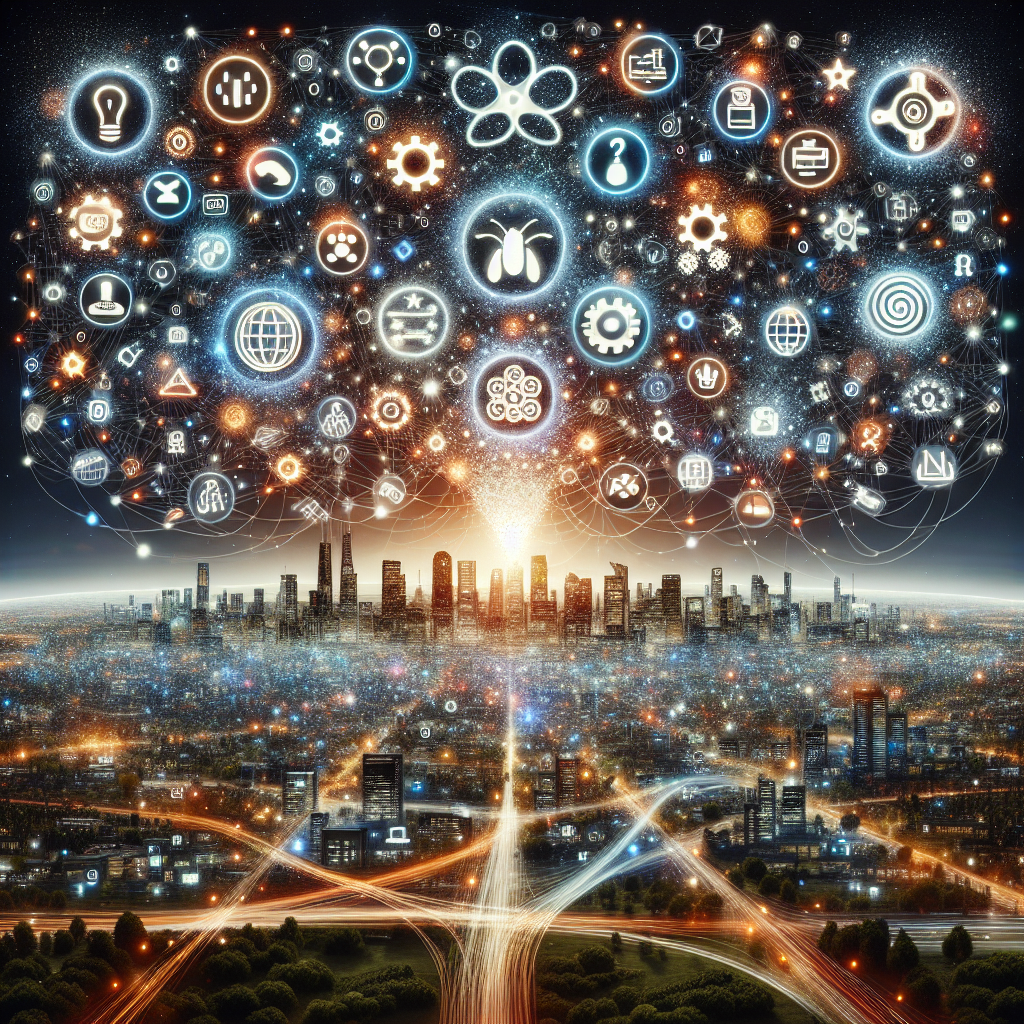In today’s fast-paced digital landscape, where technological innovation is accelerating at an unprecedented rate, software development is undergoing a transformative shift. Enter enterprise-level AI automation tools—the catalysts that are reshaping how businesses create, deploy, and maintain their digital infrastructure.
Introduction: The AI-Driven Revolution in Software Development
Imagine cutting your software development cycle by 40% while simultaneously enhancing code quality and efficiency. This scenario is no longer a distant dream; it’s rapidly becoming reality through AI automation in software development. Companies across the globe are harnessing the power of AI-driven tools not just for incremental improvements but for transformative change, marking a new era where manual coding is supplemented—or even replaced—by intelligent systems.
As businesses increasingly pivot towards digital solutions, organizations both in Silicon Valley and beyond are swiftly adopting enterprise-level AI tools like Google Cloud AI and Microsoft Azure AI to maintain a competitive edge. But what drives this sudden shift? The compelling answer lies in AI’s unparalleled ability to automate complex processes, boost productivity, and foster innovation.
AI automation is not just enhancing existing practices but redefining the software development lifecycle from ideation to deployment. This paradigm shift allows businesses to focus on strategic objectives while leaving routine tasks to intelligent systems. According to a report by Gartner, AI in software engineering will result in cost savings of up to 25% for companies that adopt these technologies.
Transforming Traditional Software Development
How Artificial Intelligence is Changing the Game
Artificial intelligence isn’t merely a buzzword; it’s the driving force behind a significant transformation within software development. By automating routine tasks, AI empowers developers to focus on creative problem-solving and strategic planning. This evolution goes beyond efficiency—it revolutionizes how traditional software development methods operate.
AI-driven automation plays a pivotal role in enhancing productivity, especially within large organizations. The adoption of these tools allows teams to allocate resources more effectively, reduce error rates, and shorten release cycles. As per McKinsey Global Institute, AI has the potential to double annual economic growth rates by 2035 through improvements in labor productivity.
A case study from a leading financial services firm demonstrates this impact vividly. By implementing Microsoft Azure AI, they reduced their software development cycle time by 30% and improved code quality by reducing bug rates significantly. This transformation not only enhanced operational efficiency but also allowed the company to focus on innovative product development, providing them with a considerable edge in the competitive financial landscape.
The Role of AI-Driven Automation in Enhancing Productivity within Large Organizations
AI-driven automation enhances productivity by streamlining processes and optimizing resource allocation. For large organizations, where complexity often leads to inefficiencies, these tools can be game-changers. They facilitate faster decision-making through predictive analytics and automated testing, which ensures that software products are robust and reliable.
Consider a multinational tech company that leveraged Google Cloud AI for automating its code review process. By integrating machine learning models capable of analyzing vast quantities of code in seconds, they achieved a 50% reduction in manual code reviews. This not only saved time but also improved the quality and security of their software products.
The Future of Software Development with Enterprise-Level AI Tools
The integration of AI into software development is just beginning. As these tools become more sophisticated, their applications will expand, offering even greater efficiencies and innovations. For instance, AI can now assist in writing code that adapts to changing environments or user needs—a concept known as adaptive coding.
Future predictions suggest that by 2025, nearly 85% of software engineering tasks could be automated with the help of AI, according to a study by PwC. This shift will free up human engineers to focus on higher-level creative and strategic work, ultimately driving innovation within industries.
Industry Trends: Navigating the New Landscape
As we look ahead, several trends are emerging that organizations should monitor:
- AI-Driven Development Environments: These platforms offer an integrated suite of tools for code generation, testing, and deployment, all powered by AI.
- Collaborative AI Systems: Future software development will see more collaborative AI systems where human developers work alongside intelligent agents in real-time to produce superior outcomes.
- Enhanced Security Protocols: With the rise of AI in coding, there’s a parallel increase in tools that can predict and mitigate security vulnerabilities before they become issues.
For instance, a major e-commerce platform is exploring the use of AI for predictive maintenance within its software infrastructure, minimizing downtime and enhancing user experience.
Implementing AI Automation: A Practical Guide
Strategic Planning for Integration
Before integrating AI automation into your development processes, conduct a thorough assessment of your current workflow. Identify areas where bottlenecks occur and evaluate how AI can alleviate these issues. Start with pilot projects to test the waters before full-scale implementation.
Building an AI-Savvy Workforce
As AI tools become more prevalent in software development, it’s crucial for organizations to invest in upskilling their workforce. Encourage continuous learning through workshops and training sessions focused on AI technologies like Google Cloud AI and Microsoft Azure AI. This not only prepares your team but also fosters a culture of innovation.
Collaborating with Tech Partners
Collaboration with technology partners can accelerate the adoption of AI automation tools. By working with established providers, businesses can leverage their expertise to ensure seamless integration and maximize benefits from these technologies.
Monitoring and Evaluation
Once implemented, continuously monitor the performance of your AI systems. Use analytics to assess improvements in efficiency and productivity, and adjust strategies as needed to optimize outcomes.
Conclusion: Leading the Charge into a Smarter Future
As technology continues to evolve, AI automation in software development is not just a trend—it’s a foundational shift. By embracing enterprise-level AI tools like Google Cloud AI and Microsoft Azure AI, businesses can transform their software engineering processes—achieving higher productivity, better quality, and faster time-to-market.
The journey towards full-scale integration of AI in software development requires strategic planning and investment. However, the rewards are undeniable. Early adopters stand to gain a significant competitive edge as they lead the charge into a smarter, more efficient future.
Frequently Asked Questions
What exactly is AI automation in software development?
AI automation involves using artificial intelligence tools to automate tasks within the software development lifecycle, such as code generation, bug detection, and testing. It streamlines processes, reducing time and costs while enhancing output quality.
How can AI-driven automation enhance productivity in large organizations?
AI-driven automation enhances productivity by streamlining processes, optimizing resource allocation, reducing error rates, and shortening release cycles. This allows teams to focus on strategic initiatives that drive business growth.
What are some examples of enterprise-level AI tools?
Examples include Google Cloud AI and Microsoft Azure AI, which offer comprehensive solutions for automating various aspects of software development. These platforms provide advanced capabilities like machine learning, predictive analytics, and natural language processing.
How can organizations begin integrating AI automation into their workflows?
Organizations should start by assessing current workflows to identify bottlenecks and areas where AI can add value. Pilot projects allow teams to test the integration on a small scale before full implementation. Investing in training ensures that staff are equipped with the necessary skills to utilize these technologies effectively.
What challenges might organizations face when implementing AI automation?
Challenges include ensuring data privacy, managing change resistance within teams, and selecting appropriate tools for specific needs. Overcoming these hurdles involves clear communication of benefits, gradual integration strategies, and choosing reputable technology partners for guidance and support.
As we look to the future, AI’s role in software development will continue to grow, offering unprecedented opportunities for innovation and efficiency. Embracing this change now positions businesses at the forefront of their industries, ready to lead in a rapidly evolving digital landscape.



